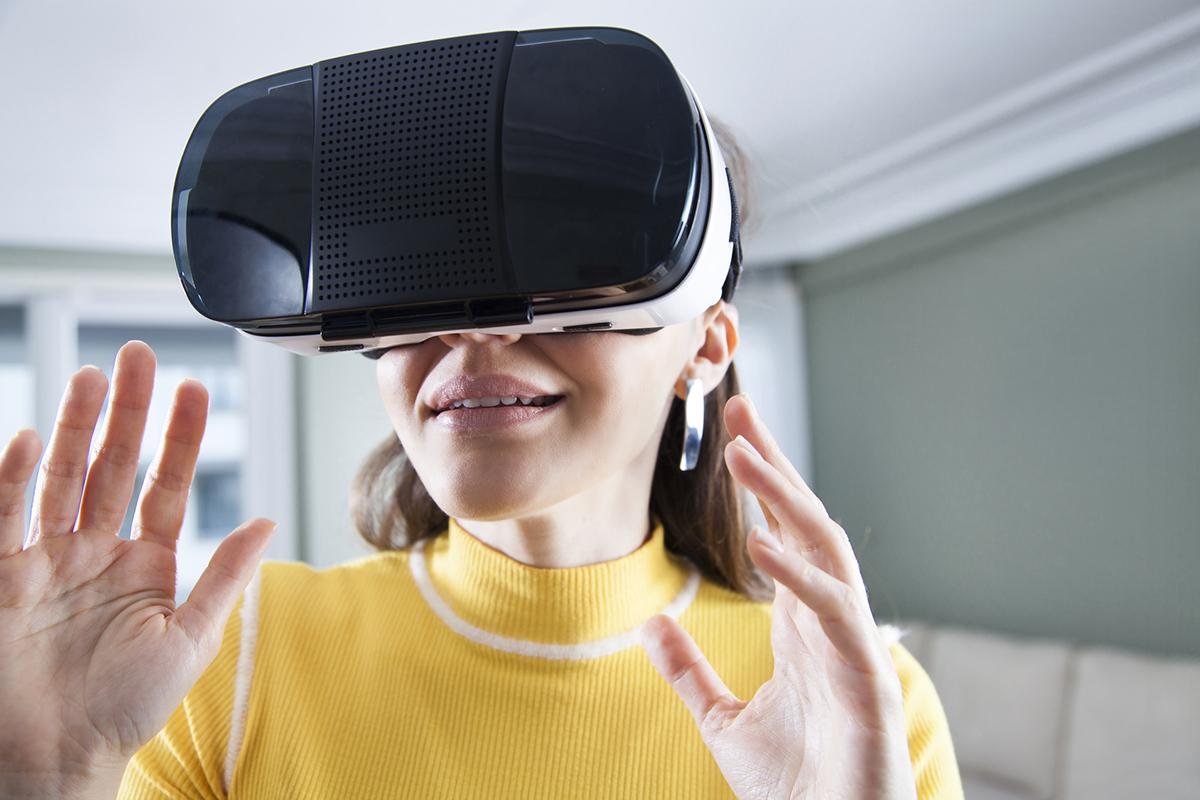Hi-tech smart glasses connecting rural and remote aged care residents to clinicians
SOURCE: HTTPS://HELLOCARE.COM.AU/
NOV 20, 2023
GUEST COMMENT How augmented reality is changing the game in ecommerce
SOURCE: INTERNETRETAILING.NET
MAY 12, 2022

Augmented reality has the power to revolutionise the way consumers shop and browse for products. The technology is being used to make shopping easier, more fun, and more engaging than ever before. What was once seen as a niche technology is now becoming the go-to tool for online brands looking to provide seamless customer experiences across channels.
The global augmented reality and virtual reality market for the retail industry alone are expected to reach $2,094.08 billion by 2027, witnessing market growth at a rate of 68.5% in the forecast period of 2020 to 2027.
With AR, users can view products in their homes, gardens and even on themselves via their phones and without having to leave their sofa. AR is a digital representation of the real world that overlays digital information on top of a user’s regular view of the world. Unlike virtual reality (VR), which completely immerses the user in an artificial environment, augmented reality merges the digital world with the real world.
And this is what’s drastically changing purchasing behaviour. It allows users to engage with products in a new and exciting way. Across our portfolio of retailers, we’ve seen a 53% increase in CTR, a 28% increase in purchases and an 8% increase in brand awareness.
In many ways, AR has a lot of benefits over traditional methods of shopping. For online retailers, AR can be used in multiple ways to enhance the customer journey, whether that’s onsite, in paid advertising or organic filters.
Retailers leading the way
Within ecommerce, this isn’t restricted to a specific industry, however, we’re working with a variety of beauty, fashion and interiors clients and seeing positive results.
One retailer to have embraced AR is Wayfair Furniture – they offer an augmented reality app that allow customers to scan through items and preview them at home before they commit to a purchase.
Made.com also recently utilised this technology to boost sales and brand awareness. The digitally native lifestyle brand wanted to find new ways for people to experience its products during a time when coronavirus (COVID-19) had prevented people from shopping for furniture in-store. Working with Meta to create an augmented reality experience, the retailer saw purchases increase by 2.5X and ad recall increase by 40%. AR allows its customers with iOS devices to position fully scaled 3D virtual furniture inside their homes. This had a substantial impact, with 63,000 additional sessions on the MADE.COM site being driven by augmented reality, of which more than 90% were new users.
It’s not just MADE.COM seeking new technology to build the bridge between in-store and online. The pandemic has been a huge driver for the increased adoption of AR in retail and ecommerce over the last two years. Although the tech was being used by a few early adopters before the pandemic, Covid-19 has accelerated its wider adoption and meant consumers across demographics are seeking more immersive experiences in their customer journey. Ray-Ban launched a hugely successful AR tool that allowed consumers to see what different styles of sunglasses suited them, all from the comfort of their own homes.
Future gazing
It’s been calculated that 100 million consumers said they used AR in 2020, however, in 2021 this skyrocketed to 1.5 billion users suggesting they use AR daily, or weekly. Across social, Visualsoft saw some features and tools increase by +600% due to screen time increasing during the peak of the pandemic. The rise in interest came around as consumers wanted an immersive shopping experience while in lockdown.
Currently, only 1% of online marketing is using AR, but throughout 2022 AR is expected to increase to 5%. Augmented reality is not just a new and interesting technology, it’s a game-changer for ecommerce. With AR, customers can shop from anywhere in the world without having to visit brick and mortar stores.
This technology also has many benefits for marketers. However, the key to successful use of AR in ecommerce is Getting at the forefront of this growing trending and being front of mind with both new and existing audiences. Brands can use the technology to build deeper relationships with customers, increasing brand loyalty.
Powerful frameworks have emerged, and the processing power of computers and internet connectivity has increased at an unparalleled rate. This means current AR experiences are richer and more realistic. Mobile devices also generally have reached a greater hardware power than ever before, allowing for the implementation of more complex projects.
Our report Get.Set.Grow, in partnership with Klarna, showed that although retailers were implementing AR, they were struggling to see a ROI. This was because brands were failing to exploit the technology fully, were investing in the wrong choice of provider or were simply measuring return in the wrong way. For retailers to see the ROI they expect it’s vital to invest in good quality creatives to ensure that content is highly shareable, or unique.
Key takeaway
Augmented reality is changing the game in ecommerce. This is a huge step for the future of retail because it provides a simple and streamlined path for shoppers to collect more information about products before they make a purchase. However, to see the greatest return on investment, retailers must integrate the technology to add value to the online customer experience, investing in their content and ensuring it’s mobile-first. Only then will AR become a core tool used within the retailers’ daily advertising landscape.
Author:
Ian Hyde, head of digital performance at the leading ecommerce specialist, Visualsoft
LATEST NEWS
WHAT'S TRENDING


Data Science
5 Imaginative Data Science Projects That Can Make Your Portfolio Stand Out
OCT 05, 2022

SOURCE: HTTPS://HELLOCARE.COM.AU/
NOV 20, 2023
SOURCE: HTTPS://WWW.EASTMOJO.COM/
OCT 31, 2023
SOURCE: HTTPS://WWW.ZDNET.COM/
SEP 27, 2023
SOURCE: HTTPS://WWW.AUSTRALIANJEWISHNEWS.COM/
SEP 28, 2023
SOURCE: HTTPS://WWW.SCIENCEDAILY.COM/
AUG 09, 2023
SOURCE: HTTPS://MOBIDEV.BIZ/BLOG/
JUL 11, 2023